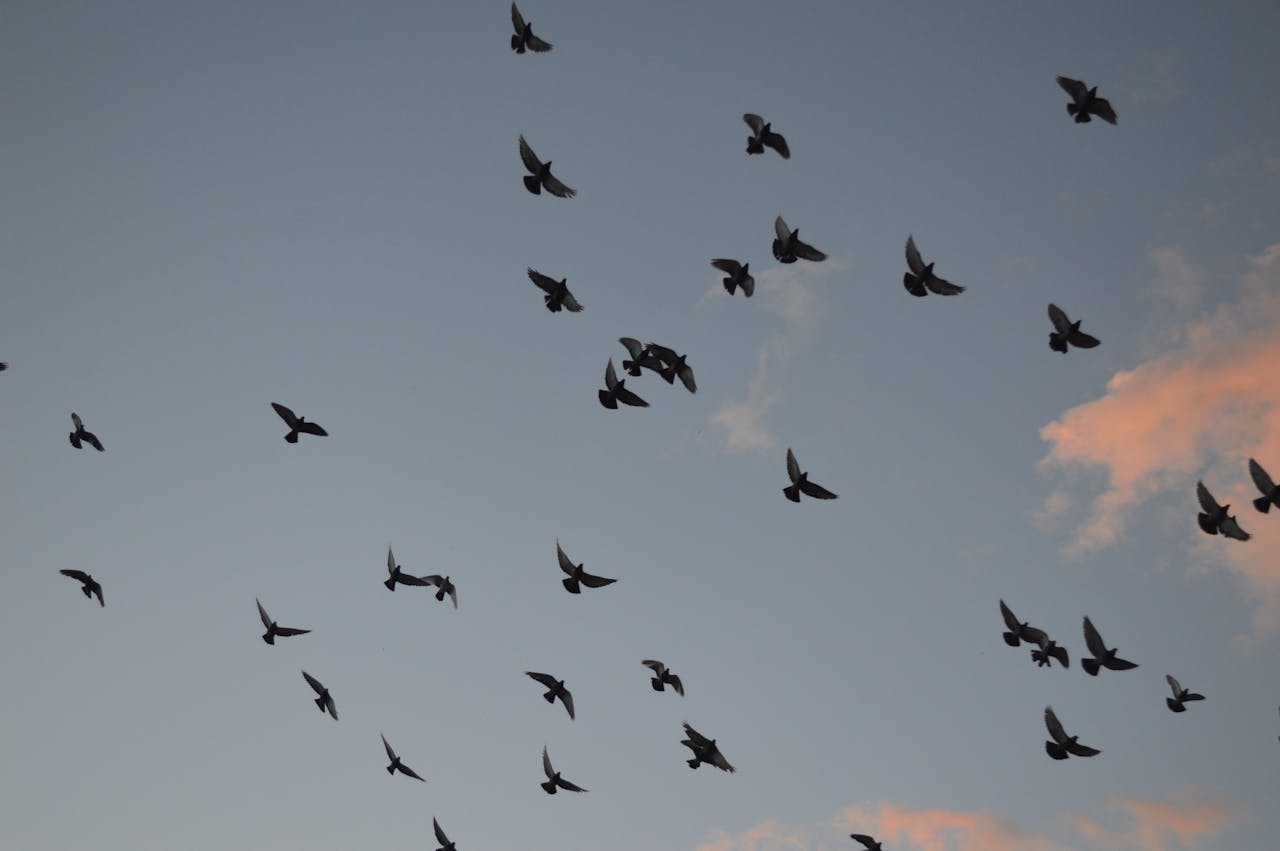
Meanwhile, a 2022 report on the state of wild birds in the United States estimated that over three billion birds have been lost in part due to climate related factors. (Pexels photo)
The spread of the highly pathogenic avian influenza virus H5N1 among animals is unprecedented having been found on all continents — except Oceania — with the United Nations calling it “a global zoonotic animal pandemic.”
H5N1 is known to be able to infect over 350 species of birds and close to 60 species of mammals with migratory waterfowl — including ducks, swans, geese and gulls — being especially susceptible to various avian-borne influenza viruses. H5N1 infected waterfowl are normally asymptomatic carriers, however, these birds can infect other species (including mammals) along their migratory routes. This global transference allows disease to spread, and for virus genetics and virulence to continually adapt.
Alarmingly, evidence indicates that climate change seems to be impacting the emergence of zoonotic viruses like H5N1. As global climate conditions change, avian migratory patterns and routes are also changing. Higher temperatures and extreme weather has resulted in large-scale population shifts in a range of temperate species. These changes have led to diseases emerging in areas — and in genetic configurations — entirely unique and unprecedented.
H5N1 is a clear indication that disease monitoring and response efforts are an essential part of any climate change adaptation and mitigation strategy.
H5N1
The H5N1 virus has been detected in the polar regions and the first confirmed case of a polar bear dying from H5N1 was recorded in Alaska in 2022. Antarctica has seen significant rates of mortality in its native elephant and fur seal populations as a result of viral exposure.
Non-migratory wild birds are highly susceptible to H5N1 infections brought on the wings of their more transitory cousins. There have been approximately 75,000 bird casualties globally as per the World Animal Health Information System. However, efforts to accurately estimate the total number of wild birds which have died as a result of H5N1 are hampered by issues in data quality and availability.
Meanwhile, a 2022 report on the state of wild birds in the United States estimated that over three billion birds have been lost in part due to climate related factors.
On land, the H5N1 virus has been detected in dairy cattle, and in 2024, a Texas agricultural worker was infected with H5N1. These cases suggest that H5N1 is adapting to infect mammalian hosts.
In March of this year, reports began to emerge of unusual deaths in young goats on a farm in Minnesota. That same farm had individuals in its poultry flock test positive for H5N1 and the goats and poultry shared similar spaces and water sources. It was later determined that the H5N1 strains in both the poultry and goats were highly related.
In May of 2024, the U.S. Department of Agriculture confirmed the detection of H5N1 in alpacas on a farm in Idaho. Similar to previous cases, this farm also had a backyard poultry population test positive for H5N1 with unusually high amounts of the virus detected across the farm. To date, 12 states in the U.S. have reported outbreaks of H5N1 with 101 dairy herds affected.
The discoveries of H5N1 on farms, alongside recent analysis of viral dispersal patterns, reiterate the importance of climate change shifting the migratory patterns of birds in the spread of viruses around the globe.
Climate change and H5N1
There is increasing evidence that climate change is accelerating the global spread and emergence of new H5N1 variants with evidence that wider seasonal variation is enabling the emergence of novel H5N1 variants.
In North America, the warmer winters and earlier onset of spring which global warming is causing could allow some moisture-reliant pathogens to survive and spread more easily. Meanwhile, cooler and wetter conditions can enhance the survival of influenza viruses in bird droppings and contaminated water.
Simply put, the spread of influenza viruses around the globe is dictated by their ability to survive long enough in a place to be able to transmit elsewhere — and climate change is, in some cases, making this survival more likely.
The recent cases of poultry-to-human and cattle-to-human transmissions underscore the threats posed by these viruses and the importance of understanding how climate change is affecting their spread.
Implications and mitigation
The H5N1 virus poses a significant threat to public health and the recent cases in the U.S. — coupled with H5N1’s high mortality rates in humans — underscores the need for vigilant monitoring.
Dealing with viruses is always a challenge, however, climate change is upending many conventional understandings as shifting waterfowl migration patterns and environmental conditions force us to change strategies. Strengthening health-care infrastructure, and educating communities about H5N1 risks are essential components of a comprehensive response strategy.
Promoting sustainable agricultural practices, such as improving biosecurity in poultry and cattle farms, reducing livestock population density and enhancing barn ventilation systems, is crucial. Innovative smart farming technology can also help track viral infections in poultry barns.
Conservation efforts are essential to maintain healthy ecosystems and minimize viral spread. Restoring natural habitats can mitigate the effects of climate change on wild bird populations, thereby reducing the risk of H5N1 spillover.
In the future, global leaders will need to be vigilant with respect to the trajectory of H5N1. International collaboration on disease management will be crucial for implementing climate adaptation strategies to safeguard the health of both our planet and its inhabitants against viruses like H5N1.![]()
Nitish Boodhoo, Research Associate, Department of Pathobiology, University of Guelph and Shayan Sharif, Professor of Immunology and Associate Dean, Research and Graduate Studies, University of Guelph
This article is republished from The Conversation under a Creative Commons license. Read the original article.





















